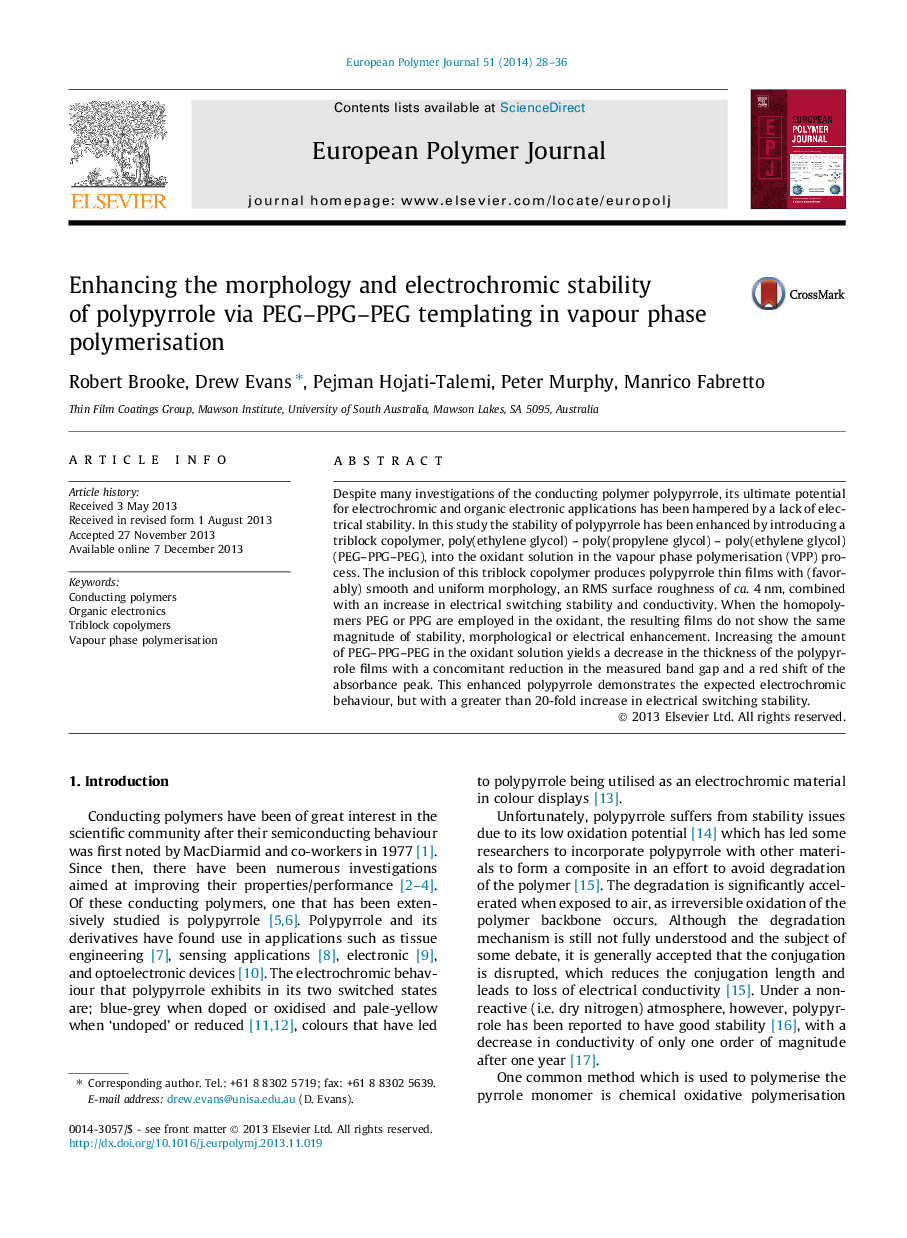| Article ID | Journal | Published Year | Pages | File Type |
|---|---|---|---|---|
| 1401813 | European Polymer Journal | 2014 | 9 Pages |
•Triblock copolymers have been incorporated into polypyrrole films using VPP.•The PPy:Copolymer films are smoother and more uniform than PPy alone.•PPy:Copolymer films have relatively greater electrical and environmental stability.•Varying the copolymer amount yields subtle manipulation of the PPy bandgap.
Despite many investigations of the conducting polymer polypyrrole, its ultimate potential for electrochromic and organic electronic applications has been hampered by a lack of electrical stability. In this study the stability of polypyrrole has been enhanced by introducing a triblock copolymer, poly(ethylene glycol) – poly(propylene glycol) – poly(ethylene glycol) (PEG–PPG–PEG), into the oxidant solution in the vapour phase polymerisation (VPP) process. The inclusion of this triblock copolymer produces polypyrrole thin films with (favorably) smooth and uniform morphology, an RMS surface roughness of ca. 4 nm, combined with an increase in electrical switching stability and conductivity. When the homopolymers PEG or PPG are employed in the oxidant, the resulting films do not show the same magnitude of stability, morphological or electrical enhancement. Increasing the amount of PEG–PPG–PEG in the oxidant solution yields a decrease in the thickness of the polypyrrole films with a concomitant reduction in the measured band gap and a red shift of the absorbance peak. This enhanced polypyrrole demonstrates the expected electrochromic behaviour, but with a greater than 20-fold increase in electrical switching stability.
Graphical abstractEnhanced VPP polypyrrole via PEG–PPG–PEG templating.Figure optionsDownload full-size imageDownload as PowerPoint slide
